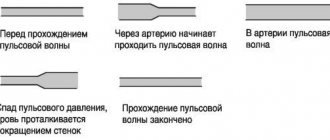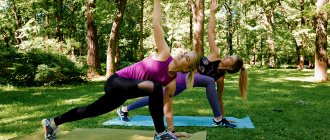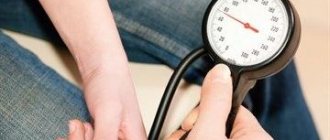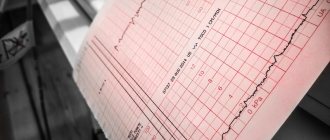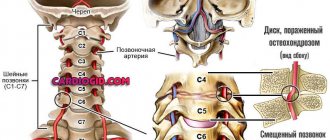Why calculate your maximum heart rate?
Based on your heart rate, you can choose the right running intensity to achieve your training goals. In other words, training smarter is better than constantly working yourself up into a sweat.
The intensity of your workout is divided into five heart rate zones, from very light to maximum intensity. Heart rate zones are calculated as a percentage of your maximum heart rate.
For example, within heart rate zone 4, you will train at 81-90% of your maximum heart rate and improve your maximum performance.
To determine your individual heart rate zones, you first need to know or calculate your maximum heart rate.
How to calculate your maximum heart rate
Your maximum heart rate can be calculated using the generally accepted formula: 220 minus age. While this may be a good starting point, research has shown that this formula is not entirely accurate or universal, especially for older people or those who have been keeping fit for years.
WHY DO YOU NEED TO CALCULATE YOUR MAXIMUM PULSE RATE?
Heart rate-based training allows you to run at the right intensity to achieve your training goals. In other words, training smart is better than always training hard.
The intensity of the workout is divided into five heart rate zones, from very light to maximum. Heart rate zones are calculated as a percentage of your maximum heart rate.
For example, in heart rate zone 4, you will train at 81-90% of your maximum heart rate and increase your maximum performance.
Alternatively, in heart rate zone 3 (which is typically your average running heart rate) you will train at a slightly reduced heart rate level of 71-80%, but you will still improve circulatory efficiency.
To determine your personal heart rate zones, you first need to know or estimate your maximum heart rate.
When it changes
The value is not the same at different times of the day. The indicator changes throughout the day depending on the following factors:
- during physical activity;
- in moments of anger, fear, excitement and other emotions;
- depending on body position (lying, sitting, standing);
- after eating;
- after taking certain medications.
The heart rate increases after eating food, especially hot and protein foods.
When body temperature rises to 37 degrees, it increases by 20 beats.
During sleep it decreases by five to seven units.
Heart rate increases by about 10% when a person is sitting and by 20% when standing.
Heart rate increases:
- when in a stuffy, hot room;
- during stress;
- during physical activity.
WHAT IS MY MAXIMUM PULSE RATE?
So now you're ready to start calculating your maximum heart rate, where do you start?
If you've ever tried to calculate your resting heart rate, it's obviously the other way around. Instead of calming your heart, you are going to push it to the limit.
To calculate your maximum heart rate, you must be willing to sweat and have the right equipment to measure it. If you're just curious about what my maximum heart rate is, you can always start by using the tools below to estimate it.
What can affect your maximum heart rate? Factors such as age, fitness level, stress, and medications such as beta blockers affect your heart rate.
Does your gender affect your maximum heart rate? To calculate the maximum heart rate for men and women, it is the same. However, you may be interested to know that smaller people tend to have a higher maximum heart rate, which is why women often have a higher heart rate than men.
Calculation formulas
There are formulas for calculating the maximum heart rate, which are based on the age and gender of a person, but one must understand that they give a certain error, since the value of the maximum heart rate depends on the individual characteristics of the body of a particular person, and not just on age and gender.
Formulas based on age
| Haskell-Fox formula (used since 1970) | Maximum heart rate = 220 – age |
| Laundery-Meshberger formula | Maximum heart rate = 206.3 – (0.711 x age) |
| Tanaka formula (derived in 2001, considered the most accurate) | Maximum heart rate = 208 – (0.7 x age) |
| Miller's formula | Maximum heart rate = 217 – (0.85 x age) |
| Roberges-Landwehr formula | Maximum heart rate = 205.8 – (0.685 x age) |
| Jackson's formula (developed in 2007) | Maximum heart rate = 206.9 – (0.67 x age) |
Formulas taking into account age and gender
| White's formula | men: Maximum heart rate = 202 – (0.55 x age) |
| women: Maximum heart rate = 216 – (1.09 x age) | |
| Ball State University Formula | men: Maximum heart rate = 214 – (0.8 x age) |
| women: Maximum heart rate = 209 – (0.9 x age) | |
| Martha Gulati Formula (published 2010) | women only: Maximum heart rate = 206 – (0.88 x age) |
| Astrand's formula | men: Maximum heart rate = 220 – age |
| women: Maximum heart rate = 226 – age |
HOW TO CALCULATE YOUR MAXIMUM PULSE RATE USING THE FIELD TEST
Beyond assessments and tests, you can calculate your maximum heart rate by putting on your running shoes, turning on your heart rate monitor, and heading out into the real world.
For field testing, you won't need fancy lab equipment, but you'll still get an accurate and personal estimate of your maximum heart rate. The premise is simple: you warm up properly and then perform an exercise that gets you closer to max effort.
Note that for the best effort field test, it's best to call a friend and ask them to join you, just in case. Also, make sure you have done some hard training in the last few weeks.
MAXIMUM PULSE RATE FIELD TEST EXAMPLE
Take this field test with a learning partner. Use a heart rate monitor and note your highest possible heart rate. This is your maximum heart rate.
Polar H10
When it comes to accuracy and connectivity, the Polar H10 chest heart rate sensor is your best choice.
- Warm up for 15 minutes on a flat surface. Build up to your normal training pace.
- Choose a hill that takes more than 2 minutes to climb. Run up the hill once (for at least 2 minutes) at a pace that you estimate you can maintain for 20 minutes. (You don't need to keep running for 20 minutes, you just need to pick up a pace that you can maintain for at least 20 minutes.) Return to the bottom of the hill.
- Run up the hill again at a faster pace. Get your heart pumping as fast as possible by picking up a pace that you estimate you can maintain for 3 kilometers. Observe your highest heart rate on the display: your maximum heart rate is approximately 10 beats higher than the marked value.
- Run back down the hill, allowing your heart rate to drop 30 to 40 beats per minute.
- Run up the hill again at a pace that you can only hold for 1 minute. Try running half a hill. Observe your highest heart rate. This brings you closer to your maximum heart rate. You can use this value as your maximum heart rate to set your heart rate zones.
Doing a maximum heart rate field test while unprepared is a surefire way to put yourself under maximum stress. If you are unsure, consult your doctor before taking the test.
Norm
Normal heart rate in adults ranges from 60 to 80 beats per minute. If the frequency is less than 60, it is bradycardia, if above 80, it is tachycardia.
Resting heart rate will vary depending on:
- person's age;
- his gender;
- body size;
- fitness.
In newborns, this figure is usually 120-140 beats per minute. If the child is premature, the value will be higher - from 140 to 160. In children by one year it decreases to 110-120, by five years - to 100, by 10 - to 90, by 13 - to 80.
In a trained person, the heart rate is lower than normal and averages about 50, while in those leading a sedentary lifestyle it can reach 100 beats at rest.
In women, the heart rate is approximately 6 beats higher than in men, and increases even more before the onset of menstruation.
In a healthy older person, the normal heart rate is usually 80 beats. If this figure rises to 160, then this indicates the presence of a serious illness.
Pulse zones. How to determine and which one is better to train in?
Beginners often exaggerate their capabilities and try to run faster and faster each time, without focusing on their heart rate (HR). This has a bad effect on cardiac endurance and can provoke diseases. Today we’ll talk about how to control your heart rate during training.
So, without going too deep into physiology, we’ll tell you. The body requires oxygen to release energy. If there is a lack of it, lactic acid (lactate) accumulates in the muscles, which makes it difficult for them to work. The pulse is an indicator of the level of exertion at which oxygen ceases to be available. When this happens, you lose your breath and lose the ability to speak calmly.
How to determine your maximum heart rate
When it is not possible to do testing on a treadmill, we turn to formulas for calculating heart rate zones, using the values of the maximum heart rate and the percentage of each zone relative to the athlete’s individual heart rate.
We calculate the maximum heart rate using the refined Roberges-Landwehr formula: HRmax = 205.8 - (0.685 * age). For example, if you are 30 years old, then your maximum heart rate will be around 185 beats per minute. However, HRmax can vary greatly among athletes of different fitness levels, and this method is not always the best way to determine maximum heart rate.
The most effective and correct method for determining your maximum heart rate and your personal heart rate zones is stress testing on a treadmill in a specialized sports clinic. We recommend doing this test at least once a year, at the beginning of the preparatory period. This will allow you to more accurately build individual training plans for preparing for a marathon (half marathon). Remember that there are no clean zones; the pulse only shows the DOMINANCE of one energy production process over another.
In training our athletes, we use 5 pulse zones:
T1. Light aerobic - warm-up/cool-down (60-75% of heart ratemax)
The first zone corresponds to low intensity, most suitable for recovery after high-intensity or long-term training. Also suitable for warming up, cooling down and active recovery between high intensity intervals.
T2. Moderate aerobic - recovery cross-country (75-84% of heart ratemax)
Training in the second zone develops the cardiovascular system and improves the ability of muscles to utilize fat. Large volumes of training in the second zone can improve the efficiency of movements and increase endurance.
Most athletes are able to “learn” a lot of training in the second zone. Before and after training in the 2nd zone, it is recommended to warm up and cool down in the 1st zone. Studies have shown that without feedback during training, most athletes go just above the second zone. This is ineffective because loads in the third zone are significantly heavier for the nervous system, and the achieved training effect differs slightly from work in the second zone. If you regularly train in the 3rd zone instead of the 2nd, then there is a high probability of accumulating significant chronic fatigue and developing a state of overtraining.
T3. Mixed - long and developing crosses (82-89% of HRmax)
The third zone corresponds to moderate intensity and is located between the respiratory threshold (the intensity at which breathing increases) and the lactate threshold. Training in this zone is more relevant for athletes specializing in long distances (from 10 km to the marathon), as they correspond to competitive speeds. Although recently there has been more and more evidence and recommendations for trained athletes to give preference to training in the second zone.
T4. Threshold: tempo run, long intervals (88-94% of HRmax)
The fourth zone is a narrow zone ending at the MPC level. This level corresponds to the intensity at which the athlete consumes the maximum possible amount of oxygen. On average, a trained athlete is able to stay in this zone for several minutes. Typically, zone 4 is used during interval training, where several short zone 4 jobs are separated by short, low-intensity recovery intervals. In this zone, the athlete runs distances from 800 to 3000m.
T5. Maximum: intervals, accelerations (92-100% of HRmax)
The fifth zone starts from the manual gearbox level and continues up to sprint intensity. Training in this zone increases anaerobic efficiency, i.e. the body’s ability to use anaerobic energy supply mechanisms, increasing lactate tolerance. As with zone 4, zone 5 is commonly used during interval training.
For convenience, we have put together a heart rate zone calculator.
What does science say?
Research has shown that the most effective results are achieved by athletes who perform approximately 80% of their training in zones 1 and 2, and the remaining 20% in zones 3-5. Do not forget that the intensity of the load is a relative value. A load that may correspond to the first zones for one athlete may be close to the upper zones for another athlete. Therefore, to optimize the training process, it is necessary to determine your individual training zones.
Why train your heart?
Here's an interesting fact for you. Athletes' heart rate at rest is lower than that of non-athletes. This is due to the fitness of their cardiovascular system and regular changes in heart rate during exercise. Accordingly, a professional’s heart works more efficiently at rest than that of an ordinary person.
Regular moderate exercise can increase the efficiency of the heart muscle, and therefore reduce heart rate at rest.
Sign up for classes at the Academy and get answers to all your questions about running, including heart rate zones. Running club "Marathon Academy" - inspiring runners since 2021. We share our experience with beginners and advanced amateurs, preparing for distances from 1 kilometer to ultramarathon. We convey a mindful approach to running
